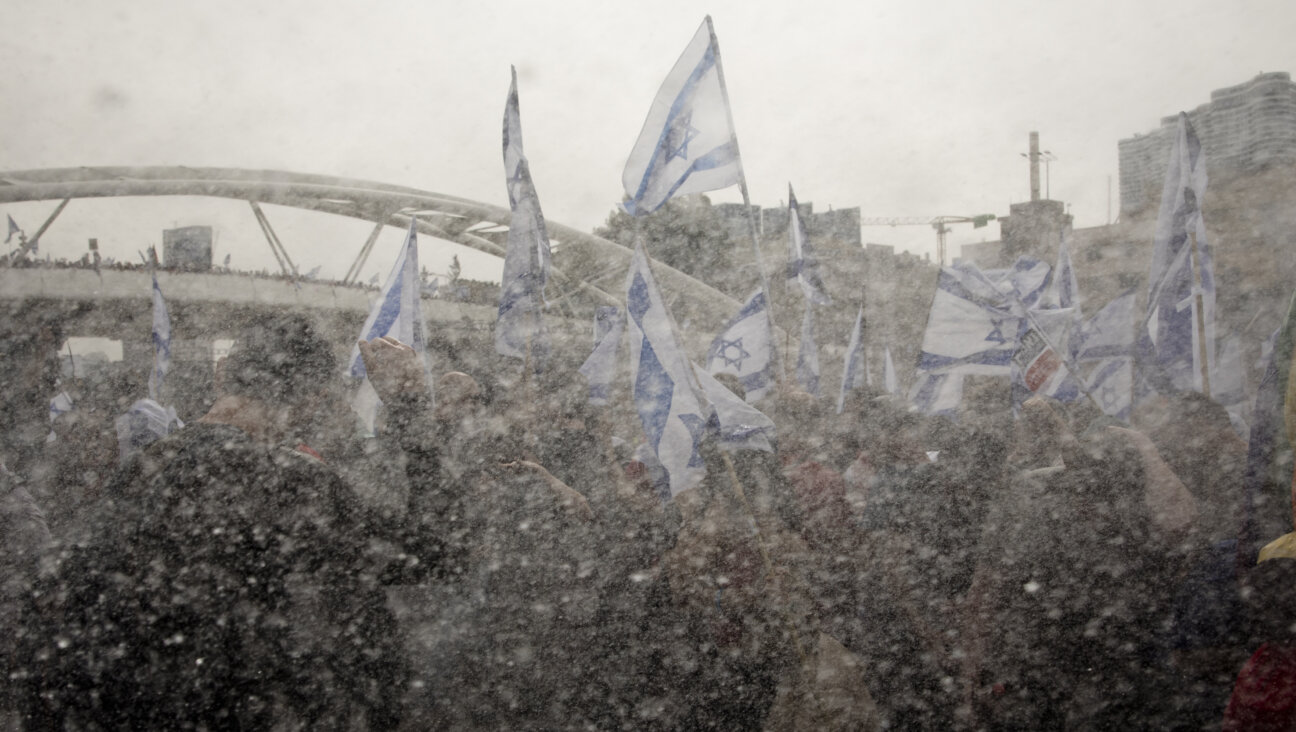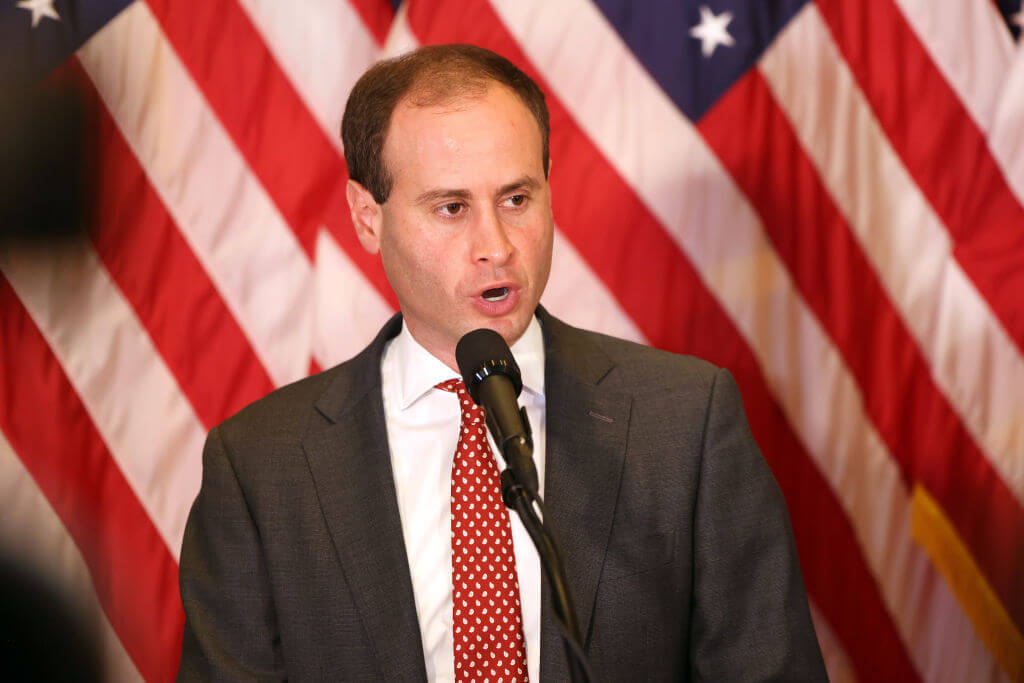Trumped
A GRACIOUS DONALD “TRUMPS” AT ARMORY SHOW
A meticulously groomed with not-a-hair-out-of-place mega-buck mogul Donald Trump — sporting a shimmering gold tie and with stunning wife Melania by his side — willingly posed for photographers and guests at the October 19 party for the Society of Memorial Sloan-Kettering preview of the Haughton International Fine Art and Dealers Show at the Park Avenue Armory. In contrast, financially endowed, tousle-haired radio shock-jock Howard Stern — gloomy-in-black and with a strategically placed dark hair tendril anchored behind the left lens of his smoky glasses — blocked attempts to photograph him! A momentary distraction enabled my daughter, Karen, to snap several candid takes; but Stern’s reaction proclaimed he was not a happy camper, even though, according to an October 23 item in the New York Post, Stern rakes in $1,000 every 24 seconds!
Amid the 1 billion dollars’ worth of art and antiques, furniture, armor and jewelry presented by 65 dealers from three continents, I was smitten by “Portrait of a Boy” by Isidor Kaufmann (Arad, Hungary 1853-1921 Vienna, Austria). Looking out from a 10 inch by 8 inch canvas is a pink-lipped, blue-eyed young boy in Hasidic garb wearing a black jacket, a fur-trimmed velvet spodek on his head and a red scarf, which the description notes is “the only secular element of his clothing.” In the background, there is undecipherable gilt Hebrew lettering. I asked exhibitor Victoria Law of the London-based Richard Green Gallery about the portrait’s provenance. According to the gallery’s tip sheet, the boy in the painting — whom I imagined a character in an Isaac Bashevis Singer story — was Kaufmann’s young son Eduard. The painting had been “in private collection circa 1950 then by descent”; in 1955 it was part of a Kaufmann exhibit in Vienna’s Jewish museum titled “Rabbiner, Bocher, Talmudschuler, Bilder des Wiener Malers.” Kaufmann’s works are represented in major public collections including London’s Tate Britain and the Jewish Museum, New York. I dared not ask the price.
Among the 1,100 New York society personages and art connoisseurs strolling through the booths at the Armory, sipping champagne and pomegranate martinis and nibbling on baby lamb chops, carved smoked salmon and seared tuna, I managed “Hello, nice to see you”” with Barbara and Donald Tober, Cynthia and Dan Lufkin, Muffie Potter and Dr. Sherrell Aston, Michèle Gerber Klein, Ingeborg Rennert, Bonnie Pfeiffer, Charles Evans, Elaine Sargent and Martha Stewart. The event raised more than $850,000 to support research and education on the prevention and early detection and treatment of cancer.
TRIBUTE TO BENENSON — BUILDER AND BENEFACTOR
Members of Rudin, Tisch, Resnick, Benenson and other New York real-estate dynasties, along with key figures from the business, financial and fine arts communities, participated in the celebration of the 100th anniversary of Benenson Capital Partners LLC, held October 24 at the Ukrainian Institute of America, a landmark French Renaissance mansion on Fifth Avenue’s Museum Mile (not to be confused with the Ukrainian House on Second Avenue, which serves some of the best blinis in town). The evening’s highlight was an exhibit of 40 paintings and sculptures from Charles Benenson’s personal collection of modern and contemporary art not seen in public for more than four decades. The collection, earmarked for his alma mater, Yale University, includes works by Calder, Dubuffet, Klee. Kandinsky, Leger, Matissee, Miro, Picasso and Rodin.
Reynold Levy, president of Lincoln Center, recalled Charles Benenson (who died February 22, 2004, at the age of 91) as a pivotal “benefactor of Lincoln Center…. In 1973 he helped raise over $12 million for the complex… which now boasts 24 auditoria.” Levy disclosed that Benenson “had a replica of the iconic Metropolitan Opera House chandeliers installed in his own dining room.”
“Speaking for my brothers Bruce, William and Frederick,” Lawrence Benenson stated: “We’re very proud of our father both as a businessman and human being…[We] look forward to continuing his legacy of civic-minded real estate development, charitable generosity and support of the arts.” The firm, founded in 1905 by [his grandfather] Benjamin Benenson, began by developing Bronx tenements at the turn of the century and continued to grow “even during the Great Depression of the 1930s.” The brothers affirmed that the Benenson firm will continue its “commitment to its role in real estate growth in all five boroughs of New York City, 42 U.S. States, Canada and France.”
Touting the “wisdom of the Founding Fathers,” New York’s Democratic Senator Charles Schumer expressed relief that “I’m not up for re-election.” Then, lauding the family’s legacy, he said, “Over 100 years, whatever they gained from New York, [the Benenson family] always gave back.” In addition to his contributions to the arts, education for inner-city children and Jewish philanthropies, Schumer stressed: “When in the mid 1970s New York City was ailing, Charlie helped found the Association for a Better New York” as well as the I Have a Dream Program, United Cerebral Palsy and Inner City Scholarship Fund. “Without the Benensons, we would be a lesser city,” Schumer concluded.
HAUTE CUISINE A LA POLONAISE
Mention Polish cooking, and the knee-jerk response is most likely: kielbasa (Polish sausage); pierogi (meat, cheese or potato-filled dough pockets), and krupnik, a hearty barley-meat-mushroom soup, all washed down by Polish vodka (which translates as “little water”). Fast forward to October 22’s historic “Feast of the Senses” grand finale of the Polish consulate’s weeklong Centennial Salon of Arts & Ideas held at Madison Avenue De Lamar Mansion, which houses the Polish consulate. Magda Gessler, dubbed “Poland’s baroness of culinary milieu,” and “owner of some of Poland’s finest dining establishments,” brought three of “the most acclaimed chefs of her culinary emporium for a once in a lifetime feast.” Needless to say, that night the consulate was overbooked!
Act I: To the right on the consulate mansion’s first floor, before ascending the red-carpeted grand staircase, an exhibition of photographs by Ryszard Horowitz. His startling color photographs include a three-quarters head view of Jerzy Kosinski, his left eye replaced by that of an eagle and his shoulder encased in black feathers — an allusion, no doubt, to his historic and controversial book, “The Painted Bird.” Born in Krakow, Poland, in 1939, Horowitz and his entire family somehow survived a series of concentration camps, and at the war’s end they were among the few Jewish families able to re-establish their lives in Krakow. “Ryszard is one of the youngest known survivors of Auschwitz,” his bio notes. He immigrated to the United States in 1959, graduated from Pratt Institute and was an art director at Grey Advertising before opening his own studio. According to his bio notes, “He is recognized as a pioneer of special effects photography predating digital imaging,”
Act II: Consul general Krzysztof Kasprzyk offered greetings and acknowledged Janusz Reiter, Poland’s ambassador in Washington; honorary consul of Republic of Poland Jan Robinsohn, Poland’s consul general in Haifa, Israel, as well as foreign diplomats and VIPs. Among the 200 guests present were David Marwell, director of the Museum of Jewish Heritage: A Living Memorial to the Holocaust; Michael Berkowitz, chairman, North American Council of the Warsaw-based Museum of the History of Polish Jews, and Sigmund Rolat, the council’s board treasurer. Born in Czestochowa, Poland, Rolat survived World War II in hiding; his parents and brother perished. A philanthropist and CEO of Oxford International Corporation, he is the moving force behind the extraordinary exhibit “The Jews of Czestochowa,” which was launched in November 2005 at New York City’s Polish consulate and has since traveled throughout the United States.
Act III: Into the consulate’s rococo gilt and mirror salon for a dazzling performance by mezzo-soprano Malgorzata Walewska (whose New York Metropolitan Opera debut in 2005 was as Delilah in Camille Saint-Saëns’s “Samson and Delilah”). Following several Polish arias, she concluded the program with a wall-reverberating rendition of Gershwin’s “Summertime” from “Porgy and Bess.” Cellist Jakub Jerzy Omsky performed several works by Polish composers.
Act IV: A palate-teasing roster of dishes displayed on tables across from the salon was finally within reach of the guests. The menu included: game pate bathed in black tartar sauce with truffles; pigs feet carpaccio with horseradish mousse; “Vilnius henhouse” of boletus mushrooms and foie gras on blinis; roasted marjoram duck-filled crepes with goat cheese mousse, walnuts and maple caramel; smoked eel in honey-dill sauce & mustard seeds; Lithuanian mini-dumplings drowned in lovage-infused zabaglione, and milk-fed veal mini-rouladen in white Dom Perignon mousse. On the dessert list, along with “famous Polish ‘nothing’” soup with red berries, floating punch baba and cinnamon parfait with plum-cognac mousse, were “Passover tarts”! With all that chometz plus eels and pig’s feet, these tarts would never pass muster as a post-Seder nosh. No doubt something was lost in translation and the menu scribe probably had Easter in mind.
A message from our CEO & publisher Rachel Fishman Feddersen

I hope you appreciated this article. Before you go, I’d like to ask you to please support the Forward’s award-winning, nonprofit journalism during this critical time.
At a time when other newsrooms are closing or cutting back, the Forward has removed its paywall and invested additional resources to report on the ground from Israel and around the U.S. on the impact of the war, rising antisemitism and polarized discourse.
Readers like you make it all possible. Support our work by becoming a Forward Member and connect with our journalism and your community.
— Rachel Fishman Feddersen, Publisher and CEO























